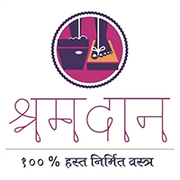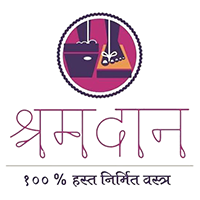The global market of handloom products reached 8.32 billion in 2024. While this renaissance has led to more sustainable practices and better improvement opportunities, several brands are mislabeling their clothes as sustainable just to improve their sales.
This unethical practice not only affects sales of authentic handlooms but also creates mistrust and scepticism among the customers. In this blog, we will talk about how you can differentiate original handloom clothes from fake ones.
Know What Handloom Really Means

When it comes to handloom clothes, the manufacturing journey is more meaningful and memorable than the final product. Before the clothes reach the cotton is spun to become threads. These threads then reach manual looms where they are turned into a piece of cloth. Finally, the cloth is used to make shirts, sarees, and other clothing items.
It is also important to note that ‘handloom’ is different from ‘homemade’ or ‘khadi’.
-
Khadi is both handspun and handwoven.
-
Handmade could mean stitched or dyed by hand—but not necessarily woven.
- Handloom involves a manually operated loom, often using yarn from spinning mills.
Each method has its charm, but if it’s the human touch in weaving you’re looking for, “handloom” is the keyword to trust.
Look for Imperfections

Machine-made clothes are flawless. Each thread is perfectly woven, with a smooth texture and no possible threads or knots. If you find the clothes to be too perfect, it’s probably not manufactured using a handloom.
Handloom clothing glorifies imperfection. It does not try to hide it as a mistake; rather, it flaunts the human nature of being imperfect. Here are some of the signs to find an authentic handloom cloth.
-
Slight variations in weave density
-
Tiny misalignments in patterns
- Thread knots tucked in gently
We like to say, the irregularity is not a flaw—it’s a fingerprint.
Tip: Hold the fabric to the light. A true handloom piece will reveal small inconsistencies in spacing. Uniformity = powerloom.
Feel the Fabric: Let Your Skin Decide

Feeling the fabric is another way to understand the authenticity of your handloom clothing. When you touch an original handloom fabric:
-
It feels softer and more breathable, especially the cotton ones.
-
You can feel the irregularities in, like, an asymmetric pattern.
-
It doesn’t feel plasticky or overly smooth.
- It feels heavy as pure materials are used in the manufacturing process.
Flip the Fabric: Check the Reverse Side
A good handloom weave is visible on both sides. You’ll often find:
-
Similar motifs on the back.
-
No sign of glue or stiff linings.
- Thread ends that are tied, not sealed
Machine-printed or mill-made clothes often have designs that are not quite visible on the reverse.
Observe the Edges of the Cloth

Selvedges (the edges of fabric) on handloom cloth are usually:
-
Slightly wavy or uneven
-
Stronger, since they are reinforced by hand
-
Sometimes marked with tiny pinholes (a sign it was pinned to the loom)
This is where the loom holds its grip, and the artisan leaves a mark.
Price is a Clue: Too Cheap = Too Risky
One of the reasons that led to the downfall of handloom clothing is its price. It couldn’t compete against the cheap clothes manufactured by the power loom. A cloth made using a handloom takes time, labour, and care at each stage, making it expensive.
When you buy expensive handloom clothes, you are also paying for:
-
Fair wages
-
Skill passed down generations
- Natural, breathable materials
This tip is especially useful when you are buying clothes online. There, you can rely on physical signs like texture and finding imperfections. When you buy handloom clothes online, stay away from clothes that are suspiciously cheap. Cheap handlooms are often fake handlooms.
Buy from Ethical, Transparent Sources
It does not take time for things to trend on the internet. As soon as Indian handloom clothes online became popular, many brands jumped on the trend with their ‘handloom collection’ along with their numerous ‘fast fashion collections’.
Avoid platforms that treat handloom like a trend. Instead:
-
Choose sellers who tell you who wove your cloth.
-
Support those who train weavers, not just source from them.
- Read labels that list weave type, origin, and certifications.
It’s high time we support our local talent rather than relying on multi-million dollar brands that are more concerned about the profits.
Summary
|
Parameters |
Real handloom clothes |
Fake handloom clothes |
|---|---|---|
|
Weave Pattern |
Slightly irregular, visible inconsistencies |
Uniform and perfectly aligned |
|
Fabric Texture |
Soft, breathable, and natural-feeling |
Too smooth, plasticky, or synthetic-feeling |
|
Reverse Side Design |
Motifs and weaves visible on both sides |
Design often faded or absent on reverse |
|
Thread Knots |
Small knots or joins tucked in gently |
Rarely visible; powerloom avoids such imperfections |
|
Selvedge (Edge Finish) |
Slightly wavy or uneven with pinholes |
Straight, machine-finished, and very clean |
|
Material Weight |
Feels heavier due to natural, undiluted fibers |
Often lighter due to mixed or synthetic materials |
|
Price |
Higher due to skilled labor and sustainable process |
Inexpensive, mass-produced |
|
Certification/Labels |
Often includes weave origin, artisan details, or certifications |
Generic labeling, minimal transparency |
|
Ethical Source |
Sold by artisan-led or verified ethical platforms |
Often sold by fast-fashion or trend-chasing brands |
Conclusion
When you choose a handloom, you choose to pause. To ask questions. To honour a lineage of quiet hands that weave intricate legacies.
Shramdaan, a charitable organisation in Madhya Pradesh, took the initiative to revive the ancient skill of manufacturing handloom clothes in India. We have successfully provided employment opportunities not just to local artisans but also to prison inmates to change their lives.
Our product collection includes 100% sustainable sarees, shirts, kurtas, and trousers along with cotton towels, yoga mats, dhotis, and dupattas. Visit Shramdaan to learn more about their products.





